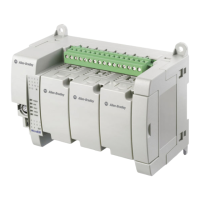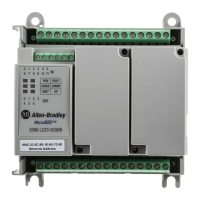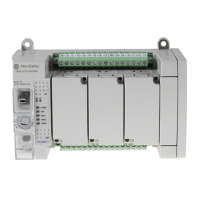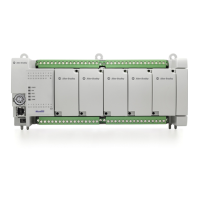Using Analog
5–5
Converting Analog Data
The analog input circuits are able to monitor current and voltage signals and convert
them to digital data. There are six terminals assigned to the input channels that
provide two voltage inputs, two current inputs and two return signals (commons).
The analog outputs can support either a current
or
voltage function. There are three
terminals assigned to the output channels that provide one voltage output, one
current output and a common (shared) terminal.
The following table shows sample Analog Signal and Data W
ord values using the
nominal transfer function formula:
N=I
in
x 32767/21 where I
in
(analog signal) is in milliamperes (mA)
N=V
in
x 32767/10.5 where Vin (analog signal) is in volts (V)
N=(I
out
– 4 mA) x 32767/16 mA where I
out
(analog signal) is in
milliamperes (mA)
N=V
out
x 32767/10V where V
out
(analog signal) is in volts (V)
Analog Signal Data Word
Input Output
0V 0 0
5V 15603 16384
10V 31207 32767
4
mA
6241 0
1
1 mA
17164 14336
20 mA
31207 32767
Converting Analog Input Data
Analog inputs convert current and voltage signals into 16-bit two’
s complement
binary values. To determine an approximate voltage that an input value represents,
use one of the equations shown on the following page.
efesotomasyon.com - Allen Bradley,Rockwell,plc,servo,drive

